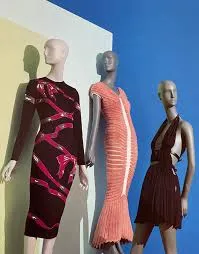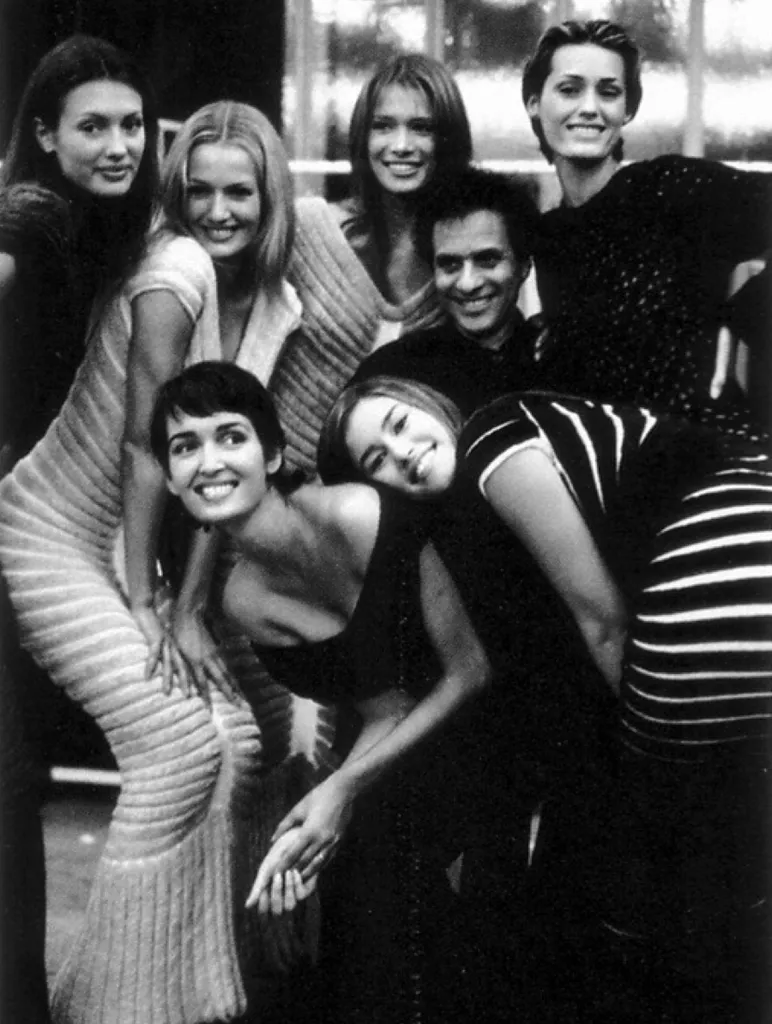
Azzedine Alaïa was more than just a fashion designer—he was an artist, a sculptor of fabric, and a true visionary. Revered for his ability to craft garments that celebrated the female form, Alaïa was known for his meticulous attention to detail, his rejection of fashion’s fast-paced cycles, and his unwavering commitment to his craft. Over the decades, he gained a cult following among celebrities, supermodels, and fashion lovers worldwide.
In this article, we will explore the life and legacy of Azzedine Alaïa, from his early days in Tunisia to his rise as one of the most influential designers in history. We’ll delve into his unique approach to fashion, his relationships with top models, and how his legacy continues to inspire today’s designers.
Table of Contents
Early Life and Education
Azzedine Alaïa was born on February 26, 1935, in Tunis, Tunisia. Raised in a modest family, he was introduced to art and design at a young age, thanks to his love for sculpting. His fascination with the human form led him to study sculpture at the École des Beaux-Arts in Tunis, an education that would later shape his approach to fashion.

photo/wikipedia
During his youth, Alaïa was deeply influenced by the strong, elegant women around him. His sister and his mother played a significant role in shaping his understanding of femininity, which became the foundation of his later work. Even before formal training in fashion, he would experiment with making clothes, showing an innate talent for draping and sewing.
Journey into Fashion
Alaïa’s journey into the world of haute couture began when he moved to Paris in the 1950s. With limited connections, he started working as a dressmaker’s assistant. His early jobs included stints at Christian Dior, where he briefly worked before being let go due to political turmoil in France at the time.
He later found employment with designers Guy Laroche and Thierry Mugler, where he refined his technical skills and developed his design philosophy. During this period, Alaïa gained an appreciation for precise tailoring and craftsmanship, elements that would define his future collections.

photo/harper’s bazaar
By the late 1970s, Alaïa decided to establish his own atelier. Working out of a small apartment, he gained a loyal following of private clients, including French socialites and fashion insiders. His designs, which sculpted the body like a second skin, quickly set him apart in the competitive world of fashion.
Design Philosophy
Azzedine Alaïa’s work was characterized by its architectural precision and sculptural elegance. Unlike many designers who followed seasonal trends, Alaïa focused on timeless beauty, ensuring that his creations would remain relevant for decades.
Key aspects of his design aesthetic included:
- Body-conscious silhouettes: Alaïa’s designs hugged the body in a way that celebrated its natural curves, emphasizing femininity rather than restricting it.

photo/forc magazine
- Expert draping and tailoring: His background in sculpture translated into his garments, as he meticulously shaped fabric to create fluid yet structured forms.
- Innovative fabric use: Whether it was leather, knitwear, or metallic textiles, Alaïa experimented with materials to enhance movement and fit.
- Attention to detail: Every piece was perfected before it left his atelier—he refused to rush his process, no matter the industry’s demands.
Notable Collections and Works
Azzedine Alaïa’s collections were not dictated by seasons or trends, but rather by his own vision. Some of his most iconic works include:
- The Bondage Dress (1986): A leather creation that redefined power dressing.

photo/pinterest
- The Hooded Gown (1989): A striking silhouette that combined elegance and mystery.

photo/fashionheritage
- The Laser-Cut Leather Dress (2012): A modern take on his love for structured materials.

photo/le mill
Each collection was an evolution of his craft, proving that great fashion is timeless.
Also Read – Paco Rabanne: The Fashion Visionary Who Redefined Style and Scent
Innovation in Fashion
Alaïa’s contributions to fashion went beyond aesthetics—he was a true innovator.
His Groundbreaking Techniques:
- Pioneering knitwear in high fashion: He created structured garments that maintained movement.
- Revolutionizing leatherwork: His soft, sculpted leather dresses broke traditional fashion norms.
- Architectural tailoring: His designs were engineered, not just sewn, ensuring perfect fit.
His innovations made his garments some of the most coveted in fashion history.
Achievements and Awards
Despite shunning the mainstream fashion system, Alaïa’s excellence was recognized worldwide.
Major Achievements:
- Chevalier de la Légion d’Honneur (2008): One of France’s highest honors.
- Designer of the Year (1985): Awarded by the French Ministry of Culture.
- Permanent Exhibitions: His works are displayed in museums like the Musée Galliera in Paris.

Musée Galliera in Paris/photo/sortiraparis
His accolades reflect his influence, but his true reward was the lasting impact of his work.
Celebrity Endorsements
Azzedine Alaïa’s designs were adored by some of the biggest names in entertainment.
Famous Clients Who Wore Alaïa:
- Madonna: Frequently performed in his body-conscious dresses.
- Rihanna: Regularly wears Alaïa archival pieces.

photo/harper’s bazar
- Michelle Obama: Chose an Alaïa dress for White House events.
- Lady Gaga: A dedicated fan of his sculptural designs.
His creations graced red carpets, music videos, and major events, proving their lasting appeal.
Interesting Facts About Azzedine Alaïa
Beyond his fashion, Alaïa had a fascinating personality and life story.
Surprising Facts:
- He rarely gave interviews: He preferred his work to speak for itself.
- He worked at his own pace: He once released a collection years after it was ready.
- His first clients were Parisian socialites: Before celebrities, he dressed elite private clients.
- He loved cooking: He often hosted friends and models for homemade Tunisian meals.
- He never followed trends: He rejected the fast fashion model and remained timeless.
Innovation in Fashion
Alaïa’s contributions to fashion went beyond aesthetics—he was a true innovator.
His Groundbreaking Techniques:
- Pioneering knitwear in high fashion: He created structured garments that maintained movement.

photo/fondationazzedinealaia
- Revolutionizing leatherwork: His soft, sculpted leather dresses broke traditional fashion norms.
- Architectural tailoring: His designs were engineered, not just sewn, ensuring perfect fit.
His innovations made his garments some of the most coveted in fashion history.
Rise to Fame in the 1980s
The 1980s marked Azzedine Alaïa’s ascent to global recognition. As the fashion industry embraced bold, powerful styles, Alaïa’s figure-hugging dresses and sharp tailoring became the go-to look for supermodels, musicians, and Hollywood stars.
Key moments in his rise to fame included:
- Celebrity endorsements: Stars like Grace Jones, Madonna, and Tina Turner became loyal clients, bringing Alaïa’s work into the spotlight.
- Supermodel collaborations: His friendship with models like Naomi Campbell helped solidify his place in fashion history.
- Breaking traditional fashion rules: Alaïa refused to follow the conventional fashion calendar, presenting collections on his own terms.
By the late ‘80s, he was dubbed the “King of Cling” due to his mastery of second-skin dresses that flattered every figure.
Alaïa’s Relationship with Supermodels
Azzedine Alaïa had an extraordinary bond with the supermodels of the 1980s and 1990s. While many designers treated models as just part of their business, Alaïa viewed them as family. This deep connection was especially evident in his relationship with Naomi Campbell, who considered him a father figure.
Alaïa’s atelier became a sanctuary for models like Cindy Crawford, Linda Evangelista, and Stephanie Seymour, who often stayed at his home when they were in Paris. Unlike other designers, he fostered personal relationships with his muses, ensuring they felt valued and respected.

photo/littlejoewoman
His trust in the models also translated into fashion. They wore his figure-hugging dresses with confidence, and in turn, they helped popularize his brand. Naomi Campbell, in particular, has spoken about how Alaïa took care of her from the age of 16, protecting her and guiding her through the industry. Their mutual loyalty remains one of the most touching aspects of his legacy.
Fashion Philosophy and Work Ethic
Azzedine Alaïa’s approach to fashion was unique. He rejected the idea of following the traditional fashion calendar, refusing to adhere to seasonal collections and fast-paced industry expectations. Instead, he worked on his own timeline, only releasing collections when he felt they were ready.
This slow fashion philosophy ensured that every Alaïa piece was a masterpiece. Unlike many designers who outsourced production, Alaïa remained hands-on, personally involved in every stage of garment creation.
Key aspects of his work ethic included:
- Perfectionism: He was known for taking months, even years, to complete a single piece.
- Quality over quantity: Alaïa never rushed to release collections just for the sake of trends.
- Independence: He resisted pressure from fashion conglomerates, ensuring he remained in control of his brand.
His unwavering dedication earned him immense respect in the industry. Fashion insiders often remarked that Alaïa wasn’t just designing clothes—he was creating art.
Impact on the Fashion Industry
Azzedine Alaïa’s influence on fashion is undeniable. He reshaped the way designers approached silhouette, form, and femininity. His impact can be seen in the works of contemporary designers like Alexander Wang, Olivier Rousteing, and Riccardo Tisci, all of whom have cited him as an inspiration.
Key contributions include:
- Revolutionizing body-conscious fashion: Before Alaïa, few designers understood how to craft clothing that accentuated the female form so perfectly.
- Pioneering the use of knitwear: He transformed simple materials into luxurious, structured garments.
- Encouraging designers to work at their own pace: His refusal to follow traditional schedules encouraged others to rethink the industry’s demands.
Even after his passing, his designs remain highly sought after, proving that true artistry never goes out of style.
Challenges and Setbacks
Despite his success, Alaïa faced several challenges throughout his career. His insistence on independence often put him at odds with the fashion industry, which thrives on rapid production and seasonal trends.
Challenges he encountered included:
- Business disputes: In the 1990s, he entered a deal with the Prada Group, which ultimately did not align with his values. He later bought back control of his company to regain creative freedom.
- Resisting commercial pressures: Many brands compromised artistic integrity for mass production—Alaïa refused to do so.
- Financial struggles: Unlike big fashion houses with corporate backing, Alaïa’s business relied on his personal dedication.
Yet, despite these difficulties, Alaïa remained steadfast in his vision, proving that true artistry cannot be compromised.
Azzedine Alaïa’s Fashion House
Even after decades in the industry, Alaïa’s brand maintained its exclusivity. His fashion house continued to produce timeless designs that stood apart from fleeting trends.
His collections expanded beyond clothing to include:
- Accessories: Iconic belts and handbags that complemented his sculpted garments.
- Footwear: Elegant, structured heels that embodied his aesthetic.

photo/flickr
- Fragrances: Though not his primary focus, he ventured into perfume to extend his brand’s reach.

photo/bois de jasmin
After his passing in 2017, the Alaïa brand continued under the guidance of his dedicated team, ensuring that his legacy would endure for generations to come.
Alaïa’s Influence Beyond Fashion
Azzedine Alaïa’s impact extended beyond the fashion industry. He was deeply involved in art, architecture, and culture.
His contributions included:
- Architectural interests: His love for sculpture translated into his studio spaces, which were designed with precision and artistic vision.
- Art patronage: He supported contemporary artists and often collaborated with them.
- Mentorship: He nurtured young designers, offering them guidance in an industry that can be notoriously difficult.
His Parisian atelier became a hub for creatives from various disciplines, blending fashion with other forms of art.
Collaborations
Although fiercely independent, Alaïa occasionally collaborated with select brands and artists.
Notable Collaborations:
- Tati (1991): A playful collection inspired by Parisian street style.

photo/paper magazine
- Pieter Mulier (Posthumous): Continued his legacy after his passing.
- Ballet and Opera Costumes: Designed for prestigious productions, merging fashion with performing arts.
Each partnership maintained his artistic integrity while reaching new audiences.
Azzedine Alaïa’s Personal Life
Despite his fame, Alaïa was a private person. He never sought the spotlight, preferring to focus on his work. Those who knew him described him as humble, generous, and deeply passionate about his craft.
He lived simply, spending most of his time in his atelier rather than engaging in the glamorous side of the fashion industry. His relationships—whether with models, friends, or clients—were built on genuine care rather than business interests.
Death and Legacy
Azzedine Alaïa passed away on November 18, 2017, at the age of 82. His death was a tremendous loss to the fashion world. Tributes poured in from designers, celebrities, and models, all of whom recognized his unparalleled contributions to fashion.
Even in his absence, his influence remains strong. The Alaïa brand continues to honor his vision, ensuring that his commitment to craftsmanship and timeless design lives on. Fashion lovers and collectors still cherish his archival pieces, proving that true artistry transcends time.
Azzedine Alaïa at a Glance:
| Category | Details |
|---|---|
| Full Name | Azzedine Alaïa |
| Birth Date & Place | February 26, 1935, Tunis, Tunisia |
| Education | École des Beaux-Arts, Tunis (Studied Sculpture) |
| Career Start | Moved to Paris in the 1950s; Worked with Christian Dior, Guy Laroche, Thierry Mugler |
| Established Own Atelier | Late 1970s in Paris |
| Design Philosophy | – Body-conscious silhouettes – Sculptural elegance – Architectural tailoring – Mastery of leather and knitwear – Timeless, trend-resistant fashion |
| Notable Works & Collections | – The Bondage Dress (1986) – Reinvented power dressing – The Hooded Gown (1989) – A dramatic, elegant silhouette – The Laser-Cut Leather Dress (2012) – A modern take on structured materials |
| Innovation in Fashion | – Pioneered knitwear in high fashion – Revolutionized leatherwork in couture – Focused on architectural tailoring and sculptural design |
| Major Achievements & Awards | – Designer of the Year (1985) – French Ministry of Culture – Chevalier de la Légion d’Honneur (2008) – France’s highest honor – Permanent Exhibitions – His works are displayed in museums like Musée Galliera, Paris |
| Famous Clients & Celebrity Endorsements | – Naomi Campbell – Called him her “papa” – Madonna – Frequently wore his body-conscious dresses – Rihanna – Wears Alaïa’s archival pieces on red carpets – Michelle Obama – Chose Alaïa for official White House events – Grace Jones, Lady Gaga, Cindy Crawford, Linda Evangelista – Iconic supporters |
| Collaborations | – Tati (1991) – Inspired by Parisian street style – Ballet & Opera Costumes – Designed for prestigious productions – Pieter Mulier (Posthumous) – Continued his legacy after his passing |
| Challenges & Setbacks | – Refused to follow the fashion calendar – Struggled with business disputes (e.g., Prada Group partnership) – Maintained independence despite industry pressures |
| Fashion House & Business Expansion | – Designed accessories, footwear, handbags, and fragrances – His brand continued after his passing in 2017 |
| Interesting Facts | – Rarely gave interviews – Let his work speak for itself – Loved cooking and hosted friends for Tunisian meals – Rejected fast fashion and seasonal collections – His first clients were Parisian socialites |
| Death & Legacy | – Passed away November 18, 2017 at age 82 – His brand continues to honor his vision and timeless craftsmanship – He remains one of the most influential designers in fashion history |
Conclusion
Azzedine Alaïa was more than just a fashion designer—he was a revolutionary who transformed the way clothing interacts with the body. His dedication to craftsmanship, his rejection of fast fashion, and his commitment to independence make him one of the most respected figures in fashion history.
Even though he is no longer with us, his influence continues to shape the industry. His designs remain as powerful and relevant today as they were decades ago, proving that true style is eternal.
FAQs
1. What made Azzedine Alaïa different from other designers?
Alaïa’s commitment to slow fashion, his sculptural approach to design, and his independence set him apart from mainstream designers.
2. Why did Azzedine Alaïa reject the traditional fashion calendar?
He believed in creating timeless pieces rather than rushing collections to meet industry deadlines.
3. Who were some of Azzedine Alaïa’s most famous clients?
Naomi Campbell, Madonna, Rihanna, Grace Jones, and Michelle Obama were among his many admirers.
4. What materials did Azzedine Alaïa frequently use?
He was known for his mastery of leather, knitwear, and sculptural fabrics that enhanced the female form.
5. What is Azzedine Alaïa’s legacy today?
His brand continues to produce designs in his signature style, and his influence is seen in the work of many contemporary designers.
One thought on “Azzedine Alaïa: The Master of Timeless Fashion”